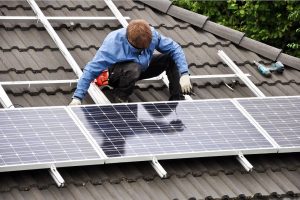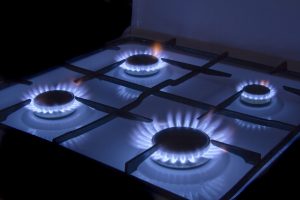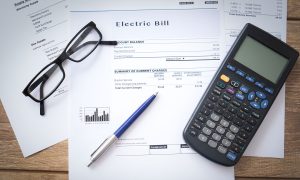In recent years, solar energy has gained tremendous popularity as a clean and sustainable alternative to traditional energy sources. But have you ever wondered how solar panels work to convert sunlight into electricity? In this article, we’ll explore the intricate process behind solar panels, how they generate electricity, and their impact on energy consumption, particularly in Australia. Our company, Off The Grid, is dedicated to providing insights into how solar systems work and how they can benefit you.
Solar Panels Working
Solar panels, also known as photovoltaic (PV) panels, are designed to capture sunlight and convert it into electrical energy. This process begins with the fundamental principle of the photovoltaic effect, where sunlight interacts with semiconductor materials within the solar panels to produce electricity.
Photovoltaic Effect:
At the heart of every solar panel are photovoltaic cells, typically made from silicon. These cells are composed of two layers of silicon: one positively charged (p-type) and one negatively charged (n-type). When sunlight strikes the surface of these cells, photons from the light knock electrons loose from their atoms, creating an electric current.
Electric Field:
The electric field created by the junction between the p-type and n-type silicon layers causes the freed electrons to flow in a particular direction, generating direct current (DC) electricity. This current is then captured and used to power electrical devices or stored in batteries for later use.
Inverter Conversion:
Since most homes and businesses use alternating current (AC) electricity, the DC electricity produced by solar panels needs to be converted into AC. This is done using an inverter, which converts the DC electricity into AC electricity suitable for use in your electrical system.
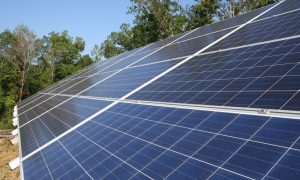
How Solar Panels Work to Generate Electricity
To understand how solar panels work for generating electricity, it’s essential to consider the entire solar energy system. A typical solar energy system includes:
- Solar Panels: The primary component that captures sunlight and converts it into DC electricity.
- Inverter: Converts DC electricity into AC electricity.
- Charge Controller: Regulates the amount of electricity flowing into the batteries to prevent overcharging.
- Batteries: Store excess electricity generated by the solar panels for use when sunlight is not available.
- Electric Meter: Measures the amount of electricity generated and used.
When sunlight hits the solar panels, the photovoltaic cells generate DC electricity. This electricity flows through the inverter, which converts it into AC electricity. The AC electricity is then used to power your home or business. Any excess electricity can be stored in batteries for later use or fed back into the grid, depending on your system’s setup.
Working Solar Panels: Key Components
For solar panels to function efficiently, several key components must work in harmony:
- Photovoltaic Cells: The heart of the solar panel, responsible for converting sunlight into electricity.
- Glass Cover: Protects the photovoltaic cells from environmental damage while allowing sunlight to pass through.
- Backing Material: Provides structural support and insulation for the photovoltaic cells.
- Frame: Typically made of aluminum, the frame holds the solar panel together and allows for easy installation.
Each of these components plays a crucial role in ensuring that solar panels operate effectively and efficiently.
How Is Solar Energy Used in Australia?
Australia is one of the leading countries in solar energy adoption, thanks to its abundant sunshine and supportive government policies. Solar energy is used in various ways across the country:
Residential Solar Systems:
Many Australian homeowners have installed solar panels on their roofs to reduce their reliance on grid electricity and lower their energy bills. Residential solar systems often include solar panels, inverters, and batteries for energy storage.
Commercial Solar Systems:
Businesses are increasingly turning to solar energy to cut costs and improve their sustainability practices. Commercial solar systems can range from small installations on office buildings to large-scale solar farms.
Solar Farms:
Large-scale solar farms are a significant contributor to Australia’s renewable energy mix. These farms consist of thousands of solar panels spread over vast areas, generating substantial amounts of electricity for the grid.
Government Incentives:
The Australian government offers various incentives and rebates to encourage the adoption of solar energy. These programs help offset the initial costs of solar panel installations and make solar energy more accessible to homeowners and businesses.
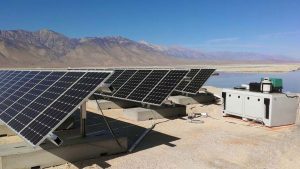
How Does a Solar System Work?
A solar system, also known as a solar power system, consists of several components working together to harness solar energy and convert it into usable electricity. Here’s a breakdown of how a typical solar system works:
- Solar Panels: Capture sunlight and convert it into DC electricity through the photovoltaic effect.
- Inverter: Converts the DC electricity generated by the solar panels into AC electricity suitable for use in your home or business.
- Charge Controller: Regulates the flow of electricity to the batteries to prevent overcharging and ensure optimal performance.
- Batteries: Store excess electricity generated by the solar panels for use during periods when sunlight is not available.
- Electric Meter: Monitors the amount of electricity generated and consumed, allowing you to track your energy production and usage.
- Grid Connection: In grid-tied systems, any excess electricity generated can be fed back into the grid, potentially earning credits or payments through net metering arrangements.
By understanding how solar panels work and how a solar system functions, you can make informed decisions about adopting solar energy for your home or business.
Benefits of Solar Panels
Investing in solar panels offers numerous benefits:
- Reduced Energy Costs: Solar panels can significantly lower your energy bills by providing a free source of electricity.
- Environmental Impact: Solar energy is a clean and renewable resource that reduces your carbon footprint and helps combat climate change.
- Energy Independence: By generating your own electricity, you reduce your reliance on external energy sources and enhance your energy security.
- Increased Property Value: Solar panel installations can increase the value of your property, making it more attractive to potential buyers.
Conclusion
Understanding how solar panels work and how solar energy is used in Australia can help you appreciate the advantages of adopting solar technology. Off The Grid provides comprehensive solutions for your solar energy needs. Whether you’re looking to reduce your energy costs, minimize your environmental impact, or enhance your energy independence, solar panels offer a sustainable and efficient way to achieve your goals. If you have any questions about how solar panels work or are interested in installing a solar system, contact Off The Grid today to learn more about how we can help you harness the power of the sun.

